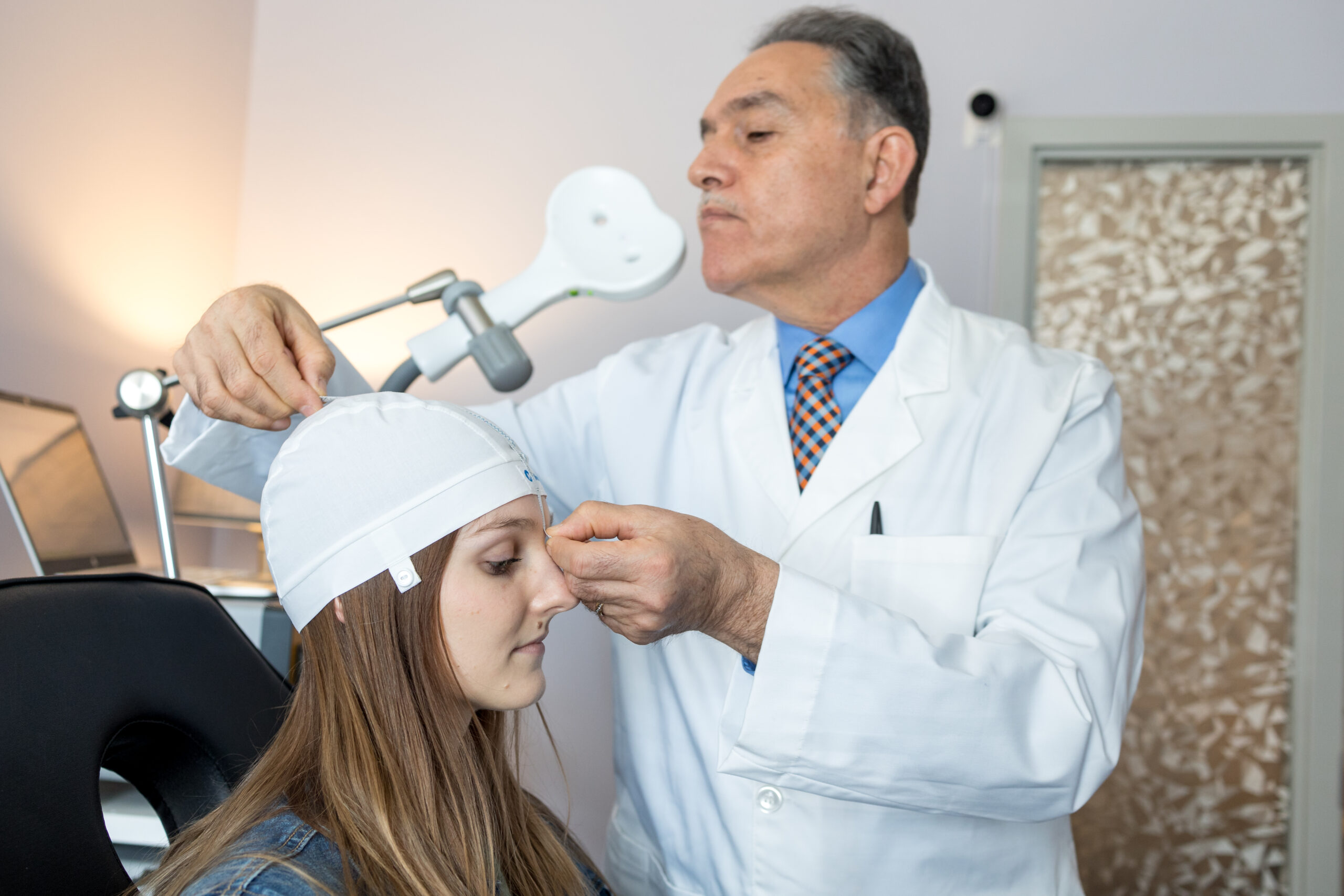In our journey to better understand the brain and its functioning, we’ve come across various techniques that allow us to modulate neural activities. One such method is inducing electric currents in the brain, a technique that has found utility in treating various neurological and psychiatric disorders, including TMS Therapy.
Understanding Brain Waves and Neuron Communication
Neurons, the core components of our brain and nervous system, communicate through electrical and chemical signals. When these neurons interact, they create small electrical fields that we can measure using electrodes on the scalp. We call these electric fields “brain waves”, and they can be observed and analyzed using techniques such as electroencephalography (EEG).
When we introduce an electric current to the brain via TMS, we can influence the activity of neurons in the targeted area. The magnetic fields generated by the TMS coil can penetrate the skull and reach the brain tissue, inducing electrical currents within the neurons. These currents can lead to depolarization or hyperpolarization of the neurons, effectively changing their firing rates and modifying their connectivity with other neurons.
The frequency of electric current is a pivotal factor when it comes to determining its modulatory effects on the brain. Here are some ways in which the frequency of electric current influences its effects on the brain:
- TACS: Transcranial electric stimulation with alternating currents, also known as TACS, can non-invasively manipulate brain oscillations. The frequency of the applied current influences the frequency of the electric fields in the brain, leading to modifications in brain oscillatory power, frequency, and phase connectivity. For instance, high-frequency TACS was observed to enhance contrast perception, but it did not alter spatial attention.
- TMS: TMS induces electric currents that modulate neural activities within the brain. In this case, the frequency of the magnetic field determines the frequency of the induced electric field, which can consequently bring about changes in neural activity. As an illustration, TMS at varying frequencies can have diverse impacts on neural activity in the motor cortex.
- Effects On Neurons: The frequency of the electric current can also influence the sensitivity of neurons to stimulation. For example, neurons in the motor cortex show different sensitivities to TMS depending on the coil orientations, the shape of the induced current pulse, and intensities. Furthermore, the frequency of the electric current can affect both the magnitude and direction of the electric fields in the brain.
The frequency of the electric current is a crucial factor in determining its modulatory effects on the brain. It affects the frequency of the electric fields in the brain and influences changes in brain oscillatory power, frequency, and phase connectivity. It also guides the frequency of the induced electric field, leading to alterations in neural activity. The sensitivity of neurons to stimulation, as well as the magnitude and direction of the electric fields in the brain, are also influenced by the frequency of the electric current.
Factors Influencing the Effects of TMS
The frequency, duration, and intensity of electric current are significant factors that influence the modulatory effects of TMS therapy on the brain. Here’s a deeper look into how each of these factors shapes TMS therapy:
- Frequency: The frequency of the electric current determines the frequency of the induced electric field, subsequently leading to changes in neural activity. Low-frequency TMS, typically less than or equal to 1 Hz, tends to decrease cortical excitability, while high-frequency TMS, typically greater than or equal to 5 Hz, tends to increase it. The frequency of the applied current also determines the frequency of the electric fields in the brain, resulting in alterations in brain oscillatory power, frequency, and phase connectivity.
- Duration: The length of TMS therapy sessions can vary based on the individual and the specific condition being treated. Following the first TMS treatment, subsequent sessions are usually very similar to the first one. Therapy sessions can range from a few minutes to an hour. The duration of the TMS therapy sessions can impact the magnitude and direction of the electric fields in the brain.
- Intensity: The intensity of the electric current decides the strength of the induced electric field, which can influence the sensitivity of neurons to stimulation. The intensity of TMS therapy can be adjusted to target specific areas of the brain and to achieve the desired therapeutic effect. It can also affect the magnitude and direction of the electric fields in the brain.
The frequency, duration, and intensity of the electric current are critical factors that shape the modulatory effects of TMS therapy on the brain. The frequency of the electric current dictates the frequency of the induced electric field, leading to changes in neural activity and brain oscillatory power. The length of TMS therapy sessions can impact the magnitude and direction of the electric fields in the brain. The intensity of the electric current determines the strength of the induced electric field, influencing the sensitivity of neurons to stimulation and the magnitude and direction of the electric fields in the brain.
The Therapeutic Potential of TMS
TMS therapy has the potential to influence neural activity in various regions of the brain, such as the prefrontal cortex, motor cortex, and the limbic system.
- Prefrontal Cortex: This region is critical for cognitive processes like attention and working memory. TMS therapy has shown promise in enhancing cognitive performance in healthy individuals and as a treatment for cognitive deficits in neurological and psychiatric disorders.
- Motor Cortex: Involved in regulating movement, TMS therapy can be useful as a diagnostic tool for motor disorders and as a treatment for motor deficits in conditions like stroke and Parkinson’s disease.
- Limbic System: This system regulates our emotions and motivation. As such, TMS therapy has seen use in treating psychiatric disorders such as depression, anxiety, and addiction.
Concluding Thoughts
Inducing electric currents in the brain using TMS is an exciting avenue for modulating neural activity and has shown promise in treating various neurological and psychiatric disorders. However, the full potential of TMS therapy and the mechanisms underlying its effects on neural activity still warrant further research. As we continue to deepen our understanding, we can better optimize this therapy’s potential and unlock new ways to improve brain health.





